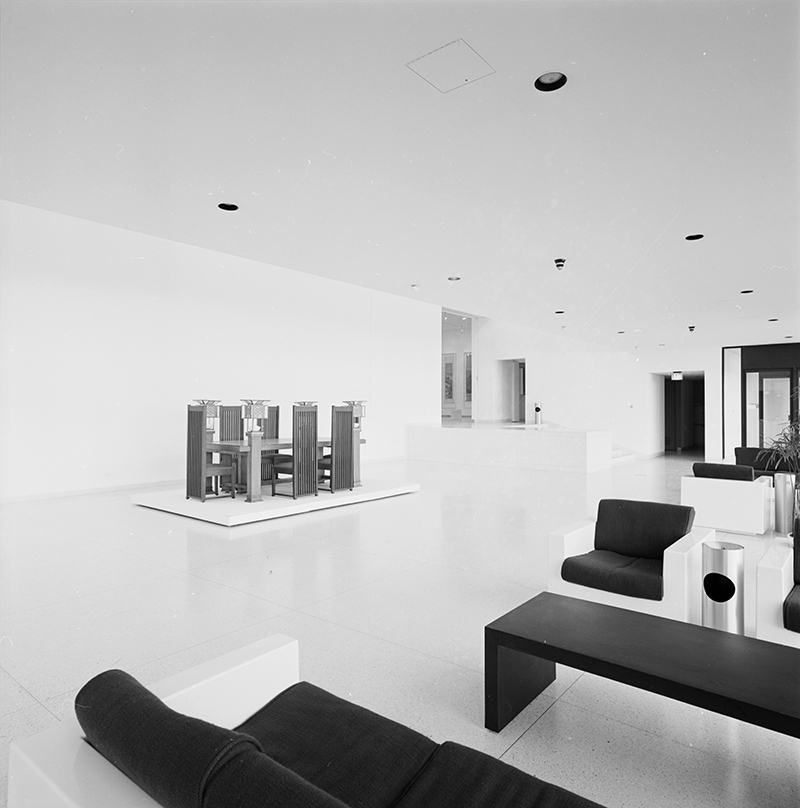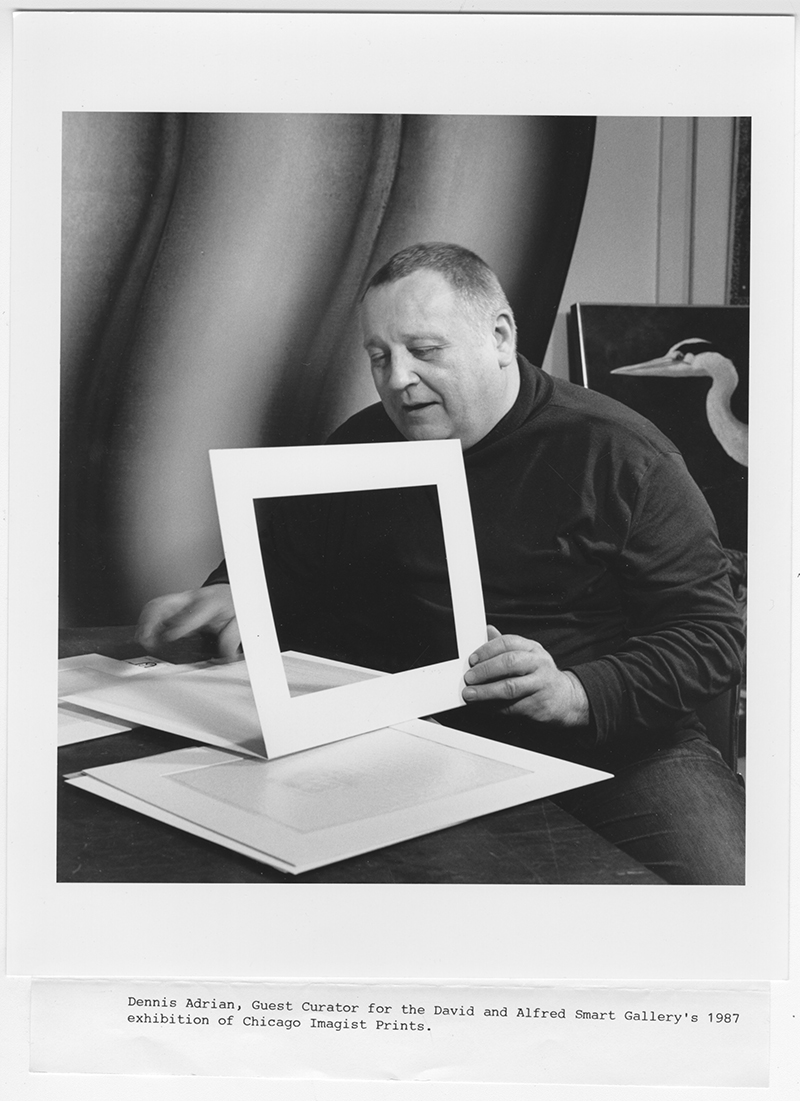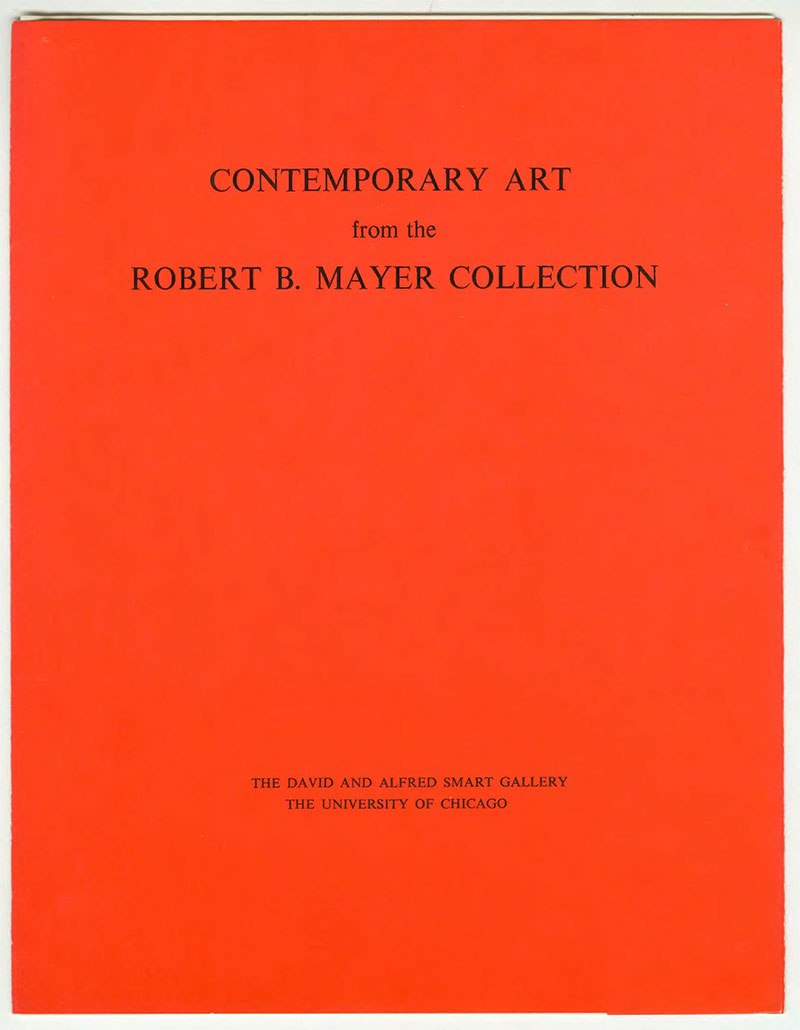This summer, I was hired to work as the Digital Collections Intern with the Smart Museum's head registrar, Sara Hindmarch, to start an ambitious project to bring the Museum’s archive of exhibition materials to life.
As a Digital Collections Intern, I got to digitize, edit, compile metadata for, and publish hundreds of exhibition files in order to make them more accessible to professors, students, curators, and researchers. Exhibition file sizes and contents can differ dramatically, but usually they will contain some form of installation photography, news articles, key exhibition didactics, and marketing materials mailed out to community members.
For the digitization process itself, I have used a flatbed scanner and a Bookeye 3 to create searchable documents, and a Hasselblad Flextight X5 scanner to digitize photo negatives.
Without further ado, here are some of my favorite finds thus far:

In this 1974 photo taken by faculty member Joel Snyder, guests gather in the Smart Gallery for the opening of its inaugural exhibition, with pieces from The Joel Starrels, Jr. Memorial Collection.

This is a view of the Smart’s lobby layout in 1974, complete with house plants, a lounge space, the iconic Frank Lloyd Wright dining table and chairs (now on view in the Robie House), and…ashtrays.
In publishing over 2,000 entries to Luna, an online database system to store digital collections, I’ve been given an intimate perspective of the Museum’s evolution. In extracting files from the depths of the Smart’s basement archives, I have followed the Museum from its gallery dedication events, to combing through more recent files relevant to upcoming exhibitions.
Finding student involvement as far back in the Smart’s history as 1976 has been especially rewarding. This is a collection of student research essays (PDF) based on artists exhibited in the show, Contemporary Art from the Robert B. Mayer Collection.

Some of my favorite files to sort through have been the museum response cards. This one was written by a Polish visitor at the Colors of Identity: Polish Art at Home and Abroad, 1890–1939. This was one of many response cards praising the Museum’s choice to highlight Polish artists.

Most recently, I have worked with Bridget Madden of the Visual Resources Center, where I do the majority of my work, to set up a request form. We wanted to broaden the impact of the project as much as possible, and rather than attempt to digitize every exhibition from the beginning, which may or may not be able to help people, we decided up open up our work to requests from the University community to prioritize exhibitions. Being able to speak with curators and educators on how they plan to use their requested files has made organizing the data that much more fulfilling. This was part of a request made by a future panelist at the College Art Association’s annual conference. The photo above is of a Stephen Hendee installation, Dead Collider (2004).

One of the highlights has been following the Smart’s partnerships with The Renaissance Society and the Hyde Park Art Center, of which the clearest example (and one of my personal favorites) is the 1987 Chicago Imagists exhibition. This poster includes artwork from all 10 of the Chicago Imagists exhibited.

I love this photo of Dennis Adrian, the Guest Curator for the Imagist Print exhibition.
The show was split between the three venues, with a trolley running between campus and HPAC for the opening to ensure all visitors would have a chance to experience the exhibition in full. I was able to work with another archivist to cross-reference with the HPAC archive, and this Chicago Imagist Art invitation (PDF) was one of the documents overlapping between our work!
Working in the Smart’s archives has opened my eyes to how effective data storage can impact an organization. In archival work, accessibility is always the name of the game. It has been incredibly encouraging to see how the Smart has consistently pushed for accessibility on all levels of impact, with the UChicago community and beyond—something essential in a field that has traditionally been considered out of reach for the majority of the population.
The Digital Collections Internship was supported by the Office of Career Advancement, UChicago Careers in Journalism, Arts, and Media.

